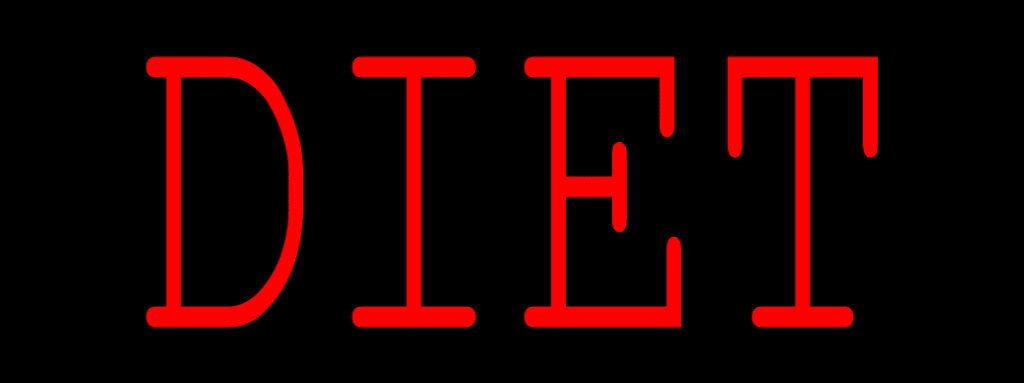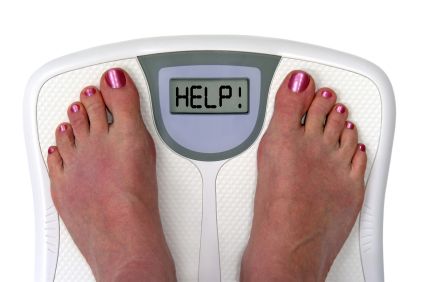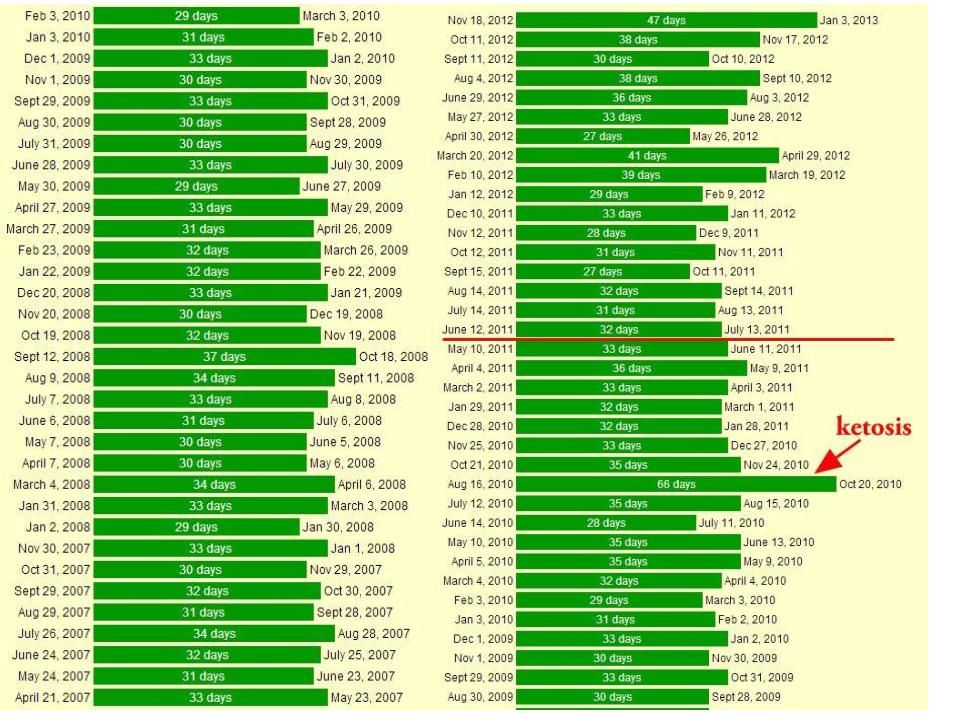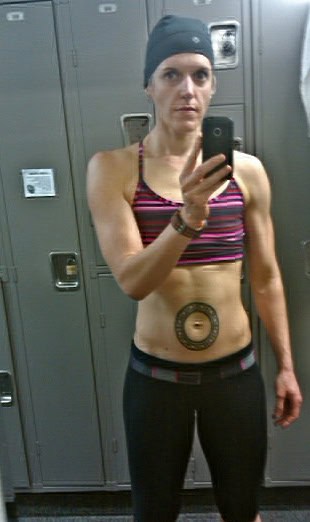I ‘met’ Kaleolani about a year ago via my facebook page. She continues to inspire me every day with her positive, life-affirming approach to her life and her health. When confronted with serious medical issues, she took a thoughtful and long-term approach to healing, by paying attention to how her own unique body responded to different treatments. Formerly diagnosed with Type 2 Diabetes, Kaleolani has made long-term lifestyle changes that support her metabolic health. She’s now off her diabetes medication and has normal metabolic function. Like my last Guest Blogger Jennifer, I find Kaleolani’s story inspiring and hopeful.
Kaleolani’s Story
 When I was asked by Amber to write a piece, I was giddy, and honored and scared to death. '? Where would I start? What was I going to talk about? So I decided, very simply, to start at the beginning. I was born and raised in Hawai’i (hence my first name). I could say I was a surfing beach bunny, sitting around eating fish and poi, and laying in the sun getting my tan. The fact is, I don’t surf, deep ocean water scares me, I love poi but not so much the fish and I find laying out boring. Somewhere along the way between childhood and today, I also developed an eating disorder. I have compulsive eating disorder or binge eating. When most people think of an eating disorder they think of someone who is starving themselves or binging and purging. An eating disorder doesn’t always fit that mold. For me it was the coping skill I used for my feelings, for my emotional protection, and to make it through my daily life.
When I was asked by Amber to write a piece, I was giddy, and honored and scared to death. '? Where would I start? What was I going to talk about? So I decided, very simply, to start at the beginning. I was born and raised in Hawai’i (hence my first name). I could say I was a surfing beach bunny, sitting around eating fish and poi, and laying in the sun getting my tan. The fact is, I don’t surf, deep ocean water scares me, I love poi but not so much the fish and I find laying out boring. Somewhere along the way between childhood and today, I also developed an eating disorder. I have compulsive eating disorder or binge eating. When most people think of an eating disorder they think of someone who is starving themselves or binging and purging. An eating disorder doesn’t always fit that mold. For me it was the coping skill I used for my feelings, for my emotional protection, and to make it through my daily life.
I met a wonderful man, we got married and due to his job, I moved away from home. Through other ups and downs of life, I know I suffered a few times from depression, including depression brought on by the C-section I had with my first daughter. It wasn’t what you’d call an ideal pregnancy and her birth was far from the fairy dust sprinkled, birth miracle of your favorite movies or TV show. We moved again. I had a second baby; got sick and things took a down hill turn. We moved again, and I didn’t realize that the bottom was so very far down or that I’d end up sinking down there and hitting rock bottom.
One day I went to the doctor’s for a check up, something I avoided because I was told all of my ills were due to my weight. At this particular visit, my new to me doctor, informed me I was pre-diabetic. No! Only one person in my family had been diabetic. This does not run in my family. We had other diseases, cancer, high blood pressure, high cholesterol, but not diabetes. What was I supposed to do with this? Well the very same thing I did with everything else. I ran the other way and ate to push it down.
My doctor did talk to me about my weight. I am 5’2″ and I had gotten up to about 360 lbs. '? That’s pretty short and round like. When she approached it, it was not in the same way that others had done before, but she really listened. She heard me when I said I’d tried every single diet, when I said I always came out of it feeling like I was the biggest failure in the world, when I said I had been listening to a couple of friends talk about compulsive eating and it seemed to fit every thing I was feeling and doing. She listened to me when I said I’d bought a book and cried as I read because it felt like I had written it myself. She then put me in touch with a totally awesome therapist. I was only able to spend 6 months with my therapist until we had to move again.
When we moved I decided it was time to live my best life right now. No more waiting for that magic miracle diet to help me shed all the pounds and make me a perfect size 2. By now I’d have been happy with the perfect size 20. I got a seat belt extender for my car, donated all of my clothes that didn’t fit and threw away the last scale in the house. I also found a new doctor in our new home. I needed help because I was tired all the time and couldn’t drive without falling asleep. I couldn’t stay up for more then 2 hours. I also had my first ambulance ride to the ER one morning, scared to death I was having a heart attack because I couldn’t breath and the pain in my chest was unbearable.
My totally new, totally awesome doctor sent me for blood tests, did a physical and sent me to a pulmonologist for a sleep study. Turns out, I have severe sleep apnea. The blood tests came back and, oh, by the way, I’ve now got full-blown diabetes. No time to panic as I was already panicking thinking I would die while sleeping with my daughters would be the ones to find me dead in the morning. I didn’t know what to do so I dumped all the things that could possibly cause me an issue with my blood sugar. I dumped all grains, all starchy vegetables, all fruits, and nearly all sugar. I got set up with my CPAP machine, took my Metformin and then I set about figuring out what to do with this disease I knew nothing about.
Insurance wouldn’t pay for a visit to a nutritionist. I did a better thing. I asked a diabetic friend, well, more like I cried all over my computer and begged my diabetic friend for any help. I can’t begin to tell you what my angel of a friend did for my peace of mind. She gave me wonderful advice and tips. I took them to heart. I wasn’t prescribed a glucometer, but I went out and got one from CVS. The great staff there was so helpful, showed me how to use it, and told me I didn’t need the latest and greatest one with bells and whistles. I needed the simplest one, with the cheapest test strips and off I went. I found myself a chiropractor and an acupuncturist. I wanted all of my bases covered. They were going to help me with all other physical and emotional aspects and most importantly, try to help my body heal my pancreatic function.
I tested everything I ate. I ran through testing strips like they were water. I began to exercise, which was not easy. After 2 C-sections and my illness my back was out of whack. I was in pain all the time and dealing with a second round of plantar fasciitis. My right knee would not bear any weight by itself. I walked, or tried to. I could make it maybe 1 1/2 minutes before I hurt so much I had to stop. I walked a small path behind our condo. It would take me about 20 minutes to walk something that should have taken 3. I saw a video for DDP Yoga and I got the tapes. I did the things my friend told me to do. Her most wonderful advice ever was to walk. She said if I ate something that spiked my blood sugar, which happened a lot at the beginning, to walk. If you move the big muscles in your body, it would move the sugar floating around in there, instead of sitting there making me feel high.
I had been getting horrible headaches before and the Metformin helped with that. I could visually see and physically feel when my blood sugar was going up too high and too fast. My walking was getting better. Finally, after a couple of months, I got rid of the last bit of sugar in my diet. I gave up chocolate. I knew it wouldn’t be a lifetime move, but I had to give it up for the time being to let my body heal.
Two weeks before my 3-month appointment with my doctor, I started to get headaches again when I took the Metformin. I decided to stop taking it. I got another blood test. My blood sugar numbers were dropping. My doctor was looking for my A1C numbers. According to diabetes.org A1C is: “A test that gives you a picture of your average blood glucose control for the past 2-3 months. The results give you a good idea of how well your diabetes plan is working.” She agreed when I told her I didn’t want to take the Metformin and try to control things with diet and exercise. Did I say yet how awesome she is?
I slowly started to add back in some whole starches like potatoes and some black and brown rice. I was sleeping so much better with my CPAP and life was amazingly different already. I found new recipes to help with my cravings as I still was dealing with my eating disorder. There’s a fine line to balance with making sure I’m doing what’s needed for health and balancing it out emotionally. I do not restrict my eating because for me, that is a sure way of creating a need for a binge. Paleo and primal web sites helped me tremendously. I still ate dairy and still had starches but I needed to learn a different way of baking to avoid wheat. I had a NEED for cookies.
I saw my doctor every three months. I got a blood test each time to check my A1C levels and various other things. I kept seeing my chiropractor and acupuncturist. My levels kept going to down closer to the normal range. I kept doing what I was doing.
My physical changes were phenomenal. I thought I wasn’t an outdoors person. I really was. I love walking in nature. I just don’t want to sit in nature or eat in nature (:-) I am not an al fresco diner), but moving through nature, I could do. My daughters and I found some trails to walk and we did as often as we could. I walked a bigger loop near our condo. I noticed, as I was doing my DDP, and standing in a lunge position, my right knee was able to go lower then it had before. I was taking pictures to track progress, and there was a visible difference in how I looked, how my clothes fit. I still didn’t use a scale and had to stop taking measurements. It wasn’t working for me emotionally to do this. I got derailed a bit by a weight loss challenge that I shouldn’t have joined, but it did teach me that restricting or surrounding myself with people who do, does not work for my peace of mind.
I then decided I wanted to try running. After getting the ok from all my medical people, I followed my intuition and got myself a pair of Vibram 5 Finger shoes and started to try to jog. I had read somewhere something about John Bingham and how he said he waddled when he jogged. That so fit. My friend told me she called it wogging. I loved it. I got some new wogging pants, sewed some skirts to wear over the pants and tried to see what I could do. I started very slowly and I’m still slow, but low and behold, the person who thought she hated running, LOVES it. Turns out, I just hated running for PE.
Today, I had my 1-year check up. My A1C numbers have me in the normal range. Not diabetic, not pre-diabetic but the normal range. I eat sprouted wheat bread when I want, I have some maple syrup on sprouted wheat pancakes, I have some sugar, and I still have my rice, my potatoes and everything else, including my chocolate. I have lost about 60 lbs. In the process I finally was able to lose my fear of what the food would do to my body. I still deal with my eating disorder one day at a time. I am living every day, and eating the chocolate, and wogging because I love it. I can walk a flight of stairs, I can run a few sprints, I can do actual squats without holding onto anything. I still have a ways to go physically, emotionally and mentally, but it’s no longer a race against a disease but a way to a better life. It’s always been about putting one foot in front of the other and finding a solution to the problem at hand. Now though, I look forward to seeing what new thing I’ll be able to do tomorrow, living my best life now.
Aloha,
Kaleolani Garcia
Homeschooling, stay at home mom of 2 and Coast Guard spouse.







